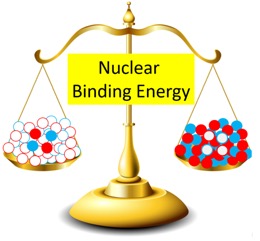Efficient technology for splitting the hydrogen-oxygen bond in water could be the key to producing low-cost, green hydrogen for energy storage at an industrial scale. Green hydrogen is expected to play a significant role in achieving the target of net zero carbon dioxide emissions. In a new study, an interdisciplinary group of researchers have identified a way to use “defect engineering” to significantly boost catalytic efficiency, taking science one step closer to sustainable, green hydrogen production.
Tag: Proton
Scientists Locate the Missing Mass Inside the Proton
A proton’s core consists of three valence quarks, but they contribute only a small fraction of the proton’s mass. Most of the mass emerges from intricate quark dynamics and is primarily governed by the strong force mediated by gluons.
World-class neutron source takes a break for major Proton Power Upgrade
The Spallation Neutron Source at Oak Ridge National Laboratory — already the world’s most powerful accelerator-based neutron source — will be on a planned hiatus through June 2024 as crews work to upgrade the facility. Much of the work — part of the facility’s Proton Power Upgrade project — will involve building a connector between the accelerator and the planned Second Target Station at SNS.
Decoding the Proton’s Response to an External Electromagnetic Field
The proton is the only composite building block of matter that is stable in nature, making its properties key to understanding the formation of matter. A team of physicists measured the proton’s electric polarizability, which characterizes the proton’s susceptibility to deformation, or its “stretchability,” in the presence of a photon’s electromagnetic field. The results reveal a puzzling new structure – a bump in the polarizability that nuclear theory cannot explain.
SpinQuest: Putting together the proton spin puzzle
SpinQuest is a collaboration of 50 individuals from 13 institutions from around the world. It starts at Fermilab’s Main Injector accelerator, which will fire our familiar protons at a polarized target. A quark from a proton in the proton beam and an antiquark from a proton in the target will interact, eventually producing a pair of oppositely charged muons, heavier cousins of the electron.
SpinQuest is supported by the DOE Office of Science.

Looking skin deep at the growth of neutron stars
Researchers leveraged data from nuclear scattering experiments to make stringent constraints on how neutrons and protons arrange themselves in the nucleus. Their predictions are tightly connected to how large neutron stars grow and what elements are likely synthesized in neutron star mergers.
MSU physics faculty’s breakthrough research resolves years-old proton size puzzle
This research, titled the “Proton Radius Experiment” and performed by a national scientific team including three MSU physicists, publishes today in Nature, the international journal of science.